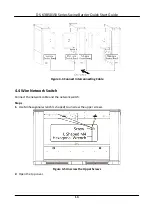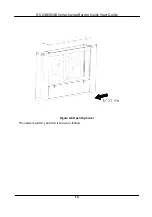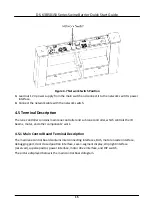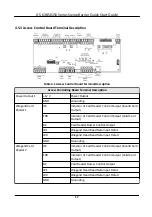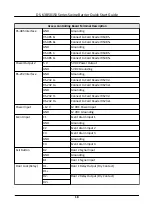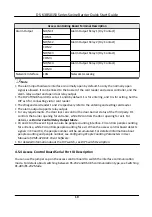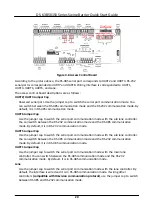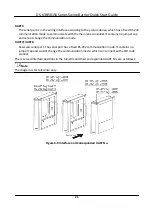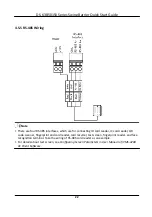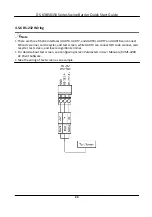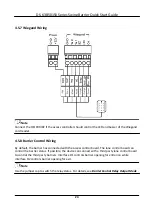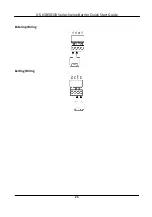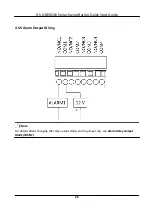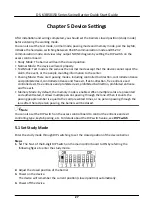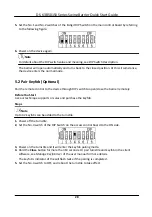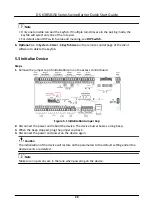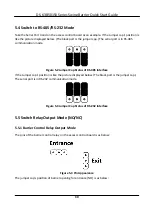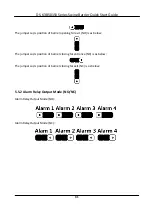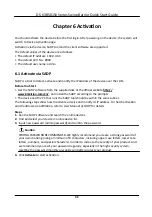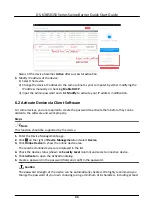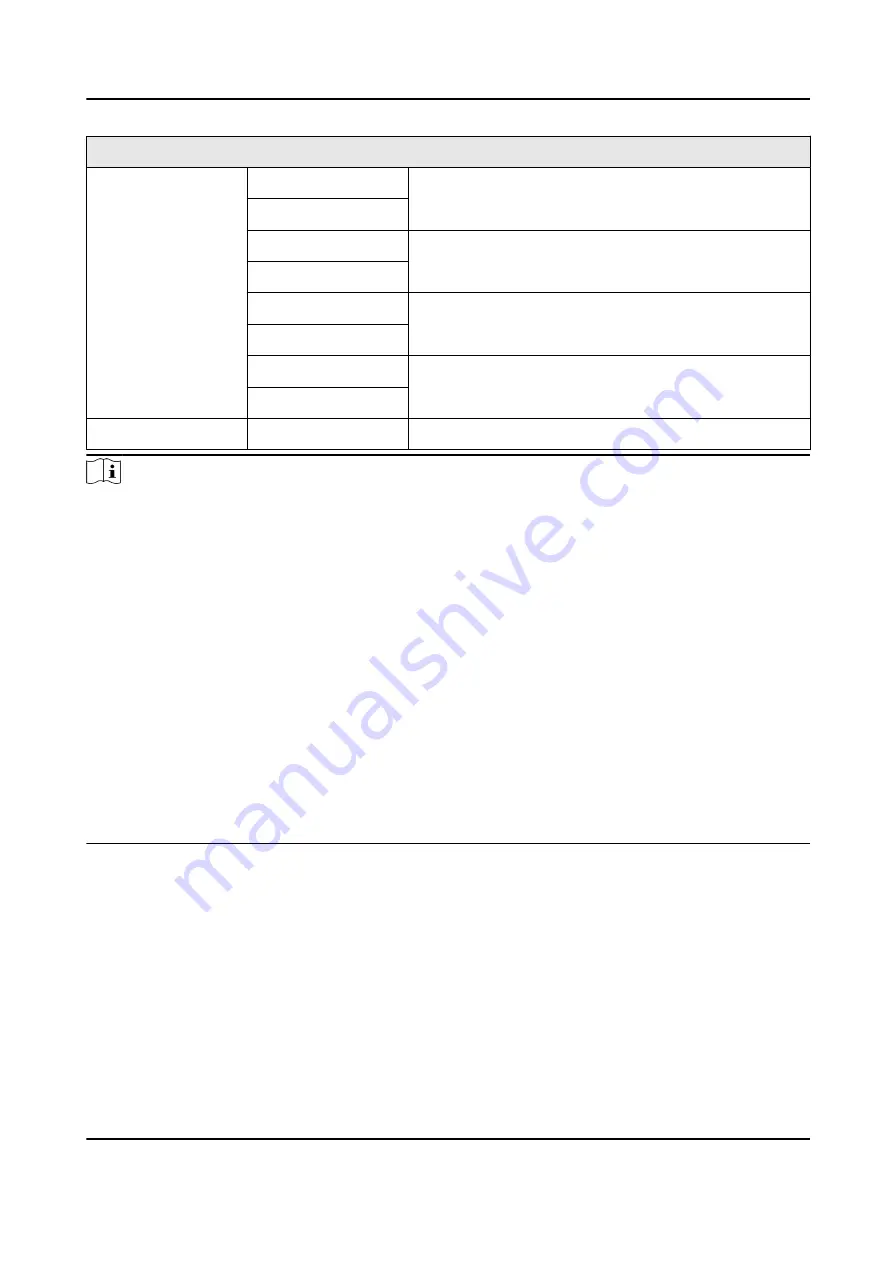
Access Controlling Board Terminal Description
Alarm Output
NO/NC1
Alarm Output Relay 1 (Dry Contact)
COM1
NO/NC2
Alarm Output Relay 2 (Dry Contact)
COM2
NO/NC3
Alarm Output Relay 3 (Dry Contact)
COM3
NO/NC4
Alarm Output Relay 4 (Dry Contact)
COM4
Network Interface
LAN
Network Accessing
Note
• The alarm input hardware interface is normally open by default. So only the normally open
signal is allowed. It can be linked to the buzzer of the card reader and access controller, and the
alarm relay output and open door relay output.
• The DIP of RS485 card ID is set as 1 and4 by default. 1 is for entering, and 4 is for exiting. Set the
DIP as 3 for connecting visitor card reader.
• The Wiegand card reader 1 and 2 respectively refer to the entering and exiting card reader.
• The alarm output supports relay output.
• For any requirements, the door lock can control the door barrier status of the third party. D1
controls the barrier opening for entrance, while D2 controls the door opening for exit. For
details, see Barrier Control Relay Output Mode .
• C3 and C4 in the event input can also be people counting interface. C3 controls people counting
for entrance, while C4 controls people counting for exit. When the access control board detects
signals in C3 and C4, the people number will be accumulated. For detailed information about
people counting and people number, see Configuring People Counting Parameters in User
Manual of iVMS-4200 AC Client Software.
• For detailed information about the DIP switch, see DIP Switch Description.
4.5.4 Access Control Board Serial Port ID Description
You can use the jumper cap on the access control board to switch the interface communication
mode. For details about switching between RS-232 and RS-485 communication type, see Switching
RS-485/RS-232 Mode.
DS-K3B501SX Series Swing Barrier Quick Start Guide
19









